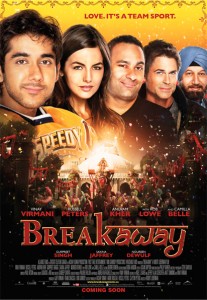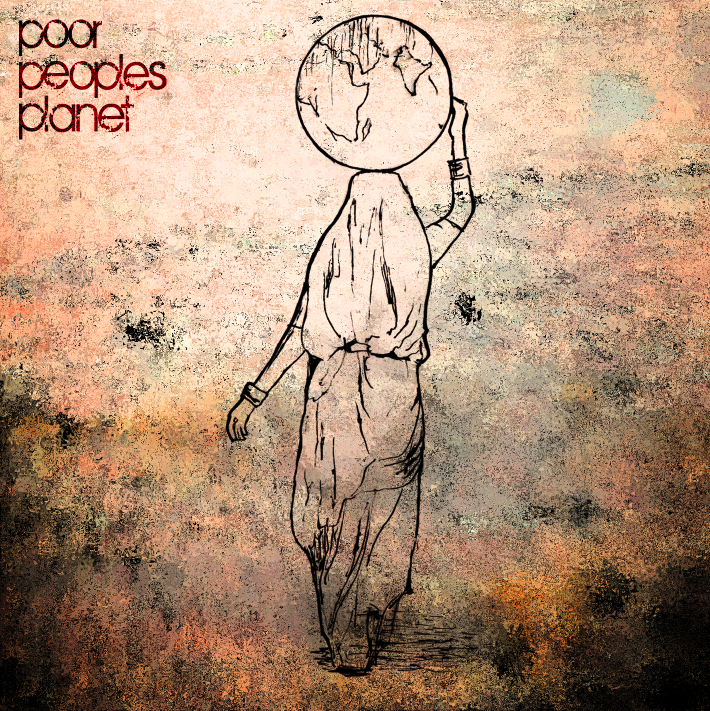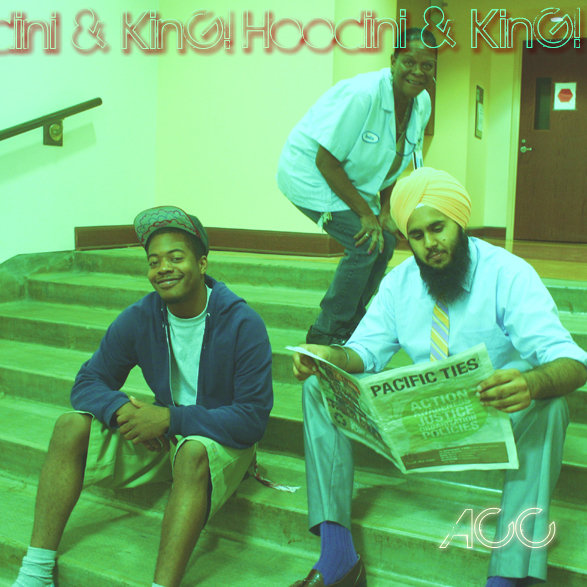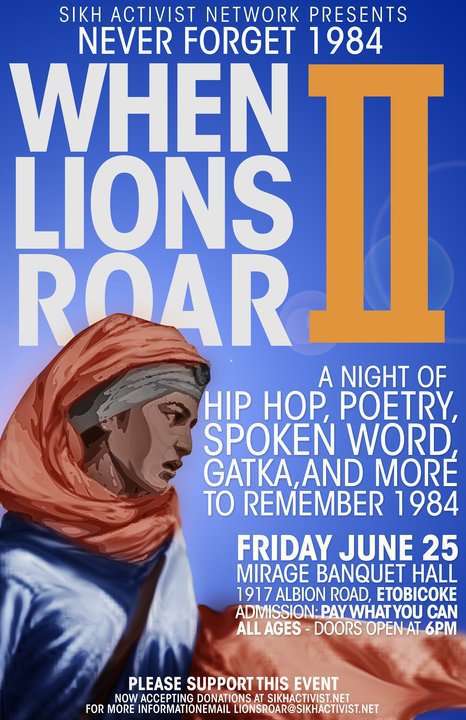
Many of us Sikhs and other South Asians in the diaspora have grown up with subtle and not so subtle messages of anti-black racism from our families and communities at large. While on the one hand we learn through Sikhi that all people are equal regardless of their race, caste, or gender, we simultaneously learn that we should not socialize with black people and certainly not date them. We learn they are not to be trusted, that we should keep our distance. We learn that they are unattractive and that we most certainly want to keep our (brown) skin as wheatish and fair and lovely as possible or else we might be called kala (which my Nana Ji used to jokingly call me, as I was the darkest in my family). I recall a family member bluntly telling me when I was a kid, “You can marry whoever you want when you grow up as long as she is not black.”
In his groundbreaking 2001 book Everybody was Kung Fu Fighting, Vijay Prashad explains the anti-black racism so pervasive in our ![]() communities:
communities:
But all people of color do not feel that their struggle is a shared one. Some of my South Asian bretheren…feel that we should take care of our own and now worry about the woes of others, that we should earn as much money as possible, slide under the radar of racism, and care only about the prospects of our own children…
Since blackness is reviled in the United States, why would an immigrant, of whatever skin color, want to associate with those who are racially oppressed, particularly when the transit into the United States promises the dream of gold and glory? The immigrant seeks a form of vertical assimilation, to climb from the lowest, darkest echelon on the stepladder of tyranny into the brightness of whiteness.
Co-blogged by JooKay Singh and Jodha
Our fellow langa(w)r-iter – Navdeep Singh highlighted the dominant pop genre of Punjabi music that celebrates nihilism and suicide through political complicity and destitution. Today, we highlight another form of music that has reached new heights in the shadow of the Shaheed.
UK-based producer Tru-Skool’s latest dharmic-track, ‘Beant Satwant Da Badla‘, which will be part of the 10th Shaheedi Immortality album, has topped the BBC Official Asian Download Chart this weekend gone. This isn’t the first time one of the Shaheedi Immorality tracks has been on the BBC Asian Network playlist (Tigerstyle’s Son of a Sardar and Jhooldey Kesri Chande have previously been played by Bobby Friction, Nihal & Adil Ray amongst others), and some would argue this track isn’t pushing the envelope musically or lyrically, since the Immortal Production (IP) collective have been putting out similar tracks for the past 10 years. So, what’s different, and is this a flash-in-the-pan riding on the back of kesri lehar, or is there more?

Previous IP tracks were given play time on the BBC courtesy of their association with Tigerstyle, who are well respected in the UK as innovative producers, rather than for the tracks themselves; diligent listeners will have noted that the songs were also edited to remove ‘controversial’ lyrics. In Jhooldey Kesri Chandey, for example, the first thirty seconds or so contained part of a speech by Baba Jarnail Singh Bhindrawale, and was removed entirely. Beant Satwant Da Badla, by contrast, has received air time by virtue of being the most officially download ‘asian’ track last week in the UK and was played unedited.
I found this new video that Mandeep Sethi released last month beautiful and inspiring. Shot in London, the young San Francisco-based hip hop artist links up with a dhadi jatha for a freestyle session unlike any other.
I’ve always loved the power, poignancy, and rhythm funkyness of dhadi jathas. Sikh and Punjabi public education through music, in a sense. These same characteristics are at the heart of hip hop and draw many of us to it, including talented artists like Mandeep. As Public Enemy’s Chuck D stated years ago, “Rap is CNN for black people.”
A few years ago, a friend of mine gave a compelling presentation about the parallels between hip hop and dhadi at SikhRI’s Sidak program in San Antonio, TX. Mandeep Sethi was not in the room, but clearly he had the same thought. Hope you enjoy it.

As promised, here is my follow-up to Monday’s post about the Inquilab hip hop workshop in New York.
This past Saturday night brought together hundreds of Sikhs (and others) for the fourth annual Lahir: Move the Movement. I always seemed to have a conflict the last several years, but finally made it out to New Brunswick, New Jersey this year for my first Lahir. I am grateful for it.
Again, I’ll keep my words short as the video below speaks for itself. But a couple of things that were especially noteworthy to me about the experience.
The audience was really multi-generational. It was much more like a typical gurdwara sangat than I had expected, crying babies, hyper adolescents, and plenty of elders included. The energy was positive and empowering, and the high school and college-aged youth, in particular, were fired up.
The performances were extremely diverse and full of raw talent and passion. As you’ll see below, the performances (only a few of which I captured) went far beyond the spoken word and hip hop that I was expecting.
A friend of mine leaned towards me while a pre-pubescent high school student with a patka was rapping passionately about post-9/11 racism and said, “I am so excited about this new generation.” Indeed, I share her sentiment. These young people are indeed moving the movement, and in doing so, in the words of the event’s organizers, perhaps they are also “bringing Sikhi back.”

As Sundari blogged about a few days ago, we just had an exciting weekend of Sikh youth art and activism in the NY/NJ area. I was lucky enough to sit in on the Sikh Coalition’s “Inquilab: Raising Our Voices” hip hop workshop for a few hours on Saturday and then ride the bus to New Jersey with the youth to attend Lahir 2011: Move the Movement.
I managed to get some video footage of both events, so I will keep my own words to a minimum. Today I am posting a brief montage from the Inquilab workshop, and on Wednesday I’ll post some highlights from Lahir.
I walked into the workshop on Saturday in the basement of South Asian Youth Action in Elmhurst, Queens while the group was in the midst of a writing activity. Many of the young people of diverse backgrounds (mostly South Asian and many Sikh) ended up putting their newly honed writing skills to the stage — a pretty large stage — at Lahir that night. Their pieces were honest, real, accessible and courageous. I was truly inspired. And found myself wondering what my teenage years would have been like had something like this (both the workshop at Lahir) had existed.

It’s that time of year again!
For those Southern California natives, you (hopefully) know it rolls around once every year. This year, SikhLens is proud to announce its annual Sikh Arts and Film Festival to be held November 18th – 20th, 2011 at the prestigious Dodge College of Film and Media Arts at Chapman University in Orange, California. As avid supporters of Sikh Arts, and creativity in general, I am hoping our readers would be especially interested in this event coming up in the next couple of weeks.

 The Sikh Arts and Film Festival serves as a central venue for artists to showcase and share Sikh heritage and culturethrough the mediums of film, literature, art, music, social media and fashion. As an often-misidentified minority, this type of forum has proven to be essential for Sikhs to transcend cultural boundaries, generate awareness, and connect with the broader community.
The Sikh Arts and Film Festival serves as a central venue for artists to showcase and share Sikh heritage and culturethrough the mediums of film, literature, art, music, social media and fashion. As an often-misidentified minority, this type of forum has proven to be essential for Sikhs to transcend cultural boundaries, generate awareness, and connect with the broader community.
For tickets, scheduling and more information, visit www.sikhlens.com.
An exhibition showcasing British Bhangra music and Culture, titled ‘Soho Road to the Punjab’, will be crossing the pond from the UK to New York City on March 18th 2011 at 6pm. The USA version of the exhibition, Soho Road – Five Rivers to Five Boroughs, will be the world’s first visual arts exhibition inspired by Bhangra music and culture held outside of the UK. The event is being hosted by 92YTribeca and is free to the public.
Originally debuting in Birmingham, UK, Soho Road to the Punjab is an exhibition that includes photography, album sleeves, promotional art and rare prints from South Asian media. This contemporary archive uncovers the worldwide Bhangra phenomenon, showcasing individuals who have championed the UK and USA Bhangra scene.
“Soho Road – from the Five Rivers to the Five Boroughs” is a gift of a title. The Punjab is, of course, the Land of the Five Rivers, while New York iconically comprises Brooklyn, Queens, Manhattan, Staten Island and the Bronx. This is a symmetry just too much too leave alone – it’s a sign! Queens is the largest and the most diverse, and famous as the birthplace of bebop and jazz. Queens also has the largest Sikh population outside California and the highest concentration of Indians anywhere in America. Punjabi is in the top ten of the hundred-odd languages spoken locally, and almost half of all South Asians who live in New York live in Queens. The NY experience will shape the show for the USA. [link]
The event will be held at 92YTribeca, 200 Hudson Street, New York. For more information and to view the exhibition online, see the Facebook page.
Last month our friends over at Sepia Mutiny posted an interview with Montreal-based hip hop producer Sikh Knowledge, which I think many TLH readers will find of interest. Sikh Knowledge aka Kanwar Anit Singh Saini has worked with many favorite Sikh hip hop artists including Humble the Poet, Mandeep Sethi, and Hoodini and breaks stereotypes right and left as he carves out his own path.
[W]hat really made an impression on me was Sikh Knowledge’s confidence in pursuing his life. At the age of 20, he decided to stop being what other people wanted him to be, dropped out of engineering school and re-started honestly. “I dropped out, came out, and rearranged my whole life,” he stated. “I reapplied and did my undergraduate degree in music with a minor in linguistics. It was the happiest time of my life. I felt good about the decisions that I made.” He’s currently pursuing his Master degree in speech language pathology while having the dual career of mixing some of the ill-est beats in North America.
You read right, Sikh Knowledge is an out and gay hip hop tattooed turban wearing artist. “I’ve definitely lost friends along the way,” he said. “Working relationships have gone sour. But at the end of the day, those artists that choose to work with me… not because of how I can brag, but because of what I do. They’re working with an underdog. That just proves to me that I’ve got something to offer.”
“As an out hip hop, dancehall artist,” he continued. “…people hear the music first and then they reach out to me and we make tracks. Subsequent to that if they find out if I’m gay, my philosophy is that’s their problem. It’s not something I wear on my sleeve but I don’t hide it either.”

A Review of Mandeep Sethi’s Poor Peoples Planet, released January 2011. 
With an unmistakably laid-back, West Coast hip hop sound, 22-year old Sikh rapper Mandeep Sethi brings us the dynamic and often incendiary (while maintaining the mellow Bay area vibes) Poor Peoples Planet. Inspired by the gypsy hip hop teachings of Xitanos Matematikos and the history of gypsies in Punjab, Sethi, a San Francisco-based artist, flows over meditative and at times haunting melodies and samples not typical of a hip hop record.
Embodying the Khalsa spirit, the album (Sethi’s third) begins with a twist on a jakara, with the track, “JahKaRa.” The jakara was originally a revolutionary call and response battle cry—a call to arms in a sense—that is of course used today to end Ardas and in times when we need some extra Guru-inspired enthusiasm and courage. This album’s “JahKaRa” begins in Spanish and flows into Sethi welcoming the listener to “the pueblo” before a series of Punjabi jakaras propels us into the experience of Poor Peoples Planet.
[Moving Swiftly::][GuerillaTactics][POORPEOPLESPLANET by Mandeep Sethi
(more…)
Vancouver-based hip hop artist Saint Solider and singer Sukhraj recently released a moving single about farmer suicides in Punjab. I won’t editorialize, as the song (and video) speaks for itself. You can download the track on iTunes and by donation at bandcamp.
Guest blogged by Ajaib Kaur
Amrita (Ami) Kaur Dang’s sound often is described as a “blend” of the classical (traditional) and the experimental (non-traditional). Tossing together her North Indian vocal training with impressive sitar skills, she playfully builds collages of inquiry. Also creating the feel of a fireside gathering for trans-national, digital, post-modern sound to question everything. While a blend or an intersection might be an easier way to describe Amrita’s style to a western audience, I find her sound to be an embodiment of the everyday Sikh experience.
Click here to listen to her track “Strange Community.”
The mesmerizing loops and samples, of each track on Amrita’s full length debut album “Hukam” capture the repetitive daily dance we each participate in. Within each track there are varying sensibilities of bargaining, or even resignation, but often vigor and passion that all listeners can relate to.
I recently got turned on to this band BlackMahal from the San Francisco area, fronted by the legendary dholi Ustad Lal Singh Bhatti.
According to the band’s website, “BlackMahal is steeped in Old California, a Punjabi-American experience that started in the 1890s when the first Punjabi-Americans settled in the Great West and forged a new identity combining elements of Mexican and African-American influence. BlackMahal also represents the new California feel: hippy hybrid hip-hop and hysterical hi-jinks. ”
The band also features the talented and righteous Sikh rapper Mandeep Sethi.
Though Sikhs have settled all around the world, roughly 20 million Sikhs still reside in Punjab. There, and elsewhere, Sikhs are facing serious problems including, but not limited to: farmer suicide, female infanticide, drugs and alcohol abuse, domestic violence, economic disasters, disease, poverty, illiteracy, and much more. [Lahir Press Release]
Many of my most recent posts have been about upcoming events happening in the Sikh Community. I think this is a positive sign – that rather than idly discussing and debating issues that inflict our panth, we are actually doing something about it! I would like to highlight two upcoming events occurring in North America. These platforms will bring together talented youth to raise awareness and by doing so, will aim to address important issues within our community. Please support these endeavors so that we can continue to move our panth in the right direction.
Lahir: Save Punjab. Save Ourselves | New Jersey | November 20th | 6pm
Lahir: Move the Movement 2010 is a night of spoken word, poetry, music, and the arts. Artists will include G.N.E., Hoodini, Mandeep Sethi, Gunjiv “Baagi” Singh, MC G-Singh and Humble the Poet. The event will kickoff the movement to respect and protect Punjab by donating all profits to the Baba Nanak Education Society (BNES), an organization which provides humanitarian assistance in rural Punjab to next of kin of suicide victims. These are families with small children left completely destitute by the death of bread-winners and have been neglected by the government. A donation of approximately $350 can help support one family for a year. For more information, visit the facebook page.
A friend recently sent me this short documentary on the Punjabi Dalit activist and singer, Bant Singh. Surprised that I had never heard of him, I was not only blown away by his singing, but by his revolutionary lyrics and fierce commitment to resisting caste and class oppression.
“If we’re to starve,” he states, “we may as well fight for our freedom. At least we’ll be remembered. Move away from living on the streets, or our thatched hovels. Let’s all become Bhagat Singh, become masters of this nation, stop this looting, stop the violation of our wives and sisters.” (source)
His righteous activism led to him being beaten almost to death a few years back, resulting in the loss of 3 of his limbs. But as you’ll see below in this video, a result of a new collaboration of artists called The Bant Singh Project, he still sings. And is not backing down on his message either.

 Here on TLH, we’ve covered a variety of talented musicians including Sikh Knowledge, Mandeep Sethi and Humble the Poet. We’ve been following these individuals, their music, new collaborations and of course new albums. I am a huge believer that youth (yes, we have a particular interest in Sikh youth here in TLH) should be encouraged to pursue their talents regardless of what may be expected of us. These musicians are doing just that – and they are creating incredible music that speaks to the masses.
Here on TLH, we’ve covered a variety of talented musicians including Sikh Knowledge, Mandeep Sethi and Humble the Poet. We’ve been following these individuals, their music, new collaborations and of course new albums. I am a huge believer that youth (yes, we have a particular interest in Sikh youth here in TLH) should be encouraged to pursue their talents regardless of what may be expected of us. These musicians are doing just that – and they are creating incredible music that speaks to the masses.
This post is for Hoodini & KinG. I have to say Hoodini is one my favourites. Not only is he extremely talented (listen to track 6/Keep it Rollin’ and track 10/Til I’m Through of the mixtape) but he’s a nice guy (a really nice guy)… and the kid has serious style. It’s like he knows he’s going to make a mark on the world, and is dressed for the occasion…
So i didn’t mean to just mention this mixtape in passing – you really have to download and listen to it yourself. It is a really dynamic piece of work. Hoodini & KinG! Present: A California Classic, is available here. While Hoodini is the emcee, the album was produced by KinG! né Keith Rice – a 21 year old producer from the San Fernando Valley in Los Angeles (he’s really really talented). Even though the two went to different high schools, their mutual love of hip-hop was destined to bring their forces together so that they could make music that would “make people fall in love again.”
I asked Hoodini what inspires him and what he told me was this,
 Last year, Maple Leaf Sikh highlighted a revolutionary event which occurred in Toronto and brought together young Sikhs to pay homage to 1984. The event, hosted by the Sikh Activist Network, returns this year and brings together artists such as Hoodini, Mandeep Sethi, Selena Dhillon and Yudh Gatka Akhara and more. For those of you who are dealing with post-Sikh-conference-blues – When Lions Roar II promises to be yet another excellent event bringing together Sikh youth in an impactful way.
Last year, Maple Leaf Sikh highlighted a revolutionary event which occurred in Toronto and brought together young Sikhs to pay homage to 1984. The event, hosted by the Sikh Activist Network, returns this year and brings together artists such as Hoodini, Mandeep Sethi, Selena Dhillon and Yudh Gatka Akhara and more. For those of you who are dealing with post-Sikh-conference-blues – When Lions Roar II promises to be yet another excellent event bringing together Sikh youth in an impactful way.
A Night of Hip Hop, Poetry, Spoken Word, Gatka and More…
To Remember 1984
Friday June 25
Mirage Banquet Hall
Admission: Pay What You Can
All Ages – Doors Open at 6pm
I have noticed these past couple of weeks that discussions about the value of Punjabi have become more prevalent. The issue of maintaining our “ma boli” is constantly on our minds and manifests in our everyday lives. However, with the onset of many Vaisakhi melas, Nagar Kirtans, and of course Satinder Sartaj concerts the discussions are heightened.
Recently, on Jus Punjabi’s “Aaj Da Mudda” show, there was an insightful conversation about pronunciation and the longevity of Punjabi. The host and guest discussed how East Punjabi’s pronunciation of words have changed (we are taking the easier route). Despite this change in pronunciation, the guest highlighted how Punjabi has survived the most turbulent of times (e.g. the state language during Maharaja Ranjit Singh’s rule was Farsi and the 1960’s division of India Punjab).
As he spoke, I was reminded of Gurdas Mann’s song “Punjabiye Zubane” (listen below). This song captures how the strength of the Punjabi language was developed over time. It is this strength that has allowed it to survive. I am left wondering if we 1) have the will and 2) the capacity to nurture and love this language like others have done in the past. Can we help nurture the strength of Punjabi in today’s context? What do you think?

We know there is a sizable Sikh population in Pakistan, despite many Sikhs who were forced to migrate to India during partition. In 2008, the Pakistani Sikh Anand Marriage Act was passed in Pakistani, which allowed Sikhs in their marriage certificates as Sikhs. Currently in India, Sikhs are identified as Hindus in marriage certificates.
Interestingly, I came across this music video by Jassi Singh Lailpura (i.e. Jasbir Singh) , a Pakistani Sikh.
He also gave an interview on a morning Pakistani television show where he talked more abut his music and life. Lailpura believes that a Pakistani is not defined by a religion or race, but by someone who believes it to be their country. It is obvious from the interview that he is a proud Punjabi Sikh from Pakistan. He talks about the impact of Partition on a Sikh woman. You can watch his interview below.

I came across this amazing video of a white guy singing a traditional Punjabi song, while playing a drum, in an outside mall area (hat tip: Satwinder). Often we wonder how Punjabi will be preserved. I think one of the unique ways is through music.
I hope you enjoy it as you begin your weekend!

A few weeks ago we posted about the issue of women in Punjab marrying men from outside of Punjab, to only be deserted by them after marriage. The post created a colorful (although often one-sided) dialogue about the issue. While our response in the diaspora is significant and can often help initiate conversations and perhaps also change, it is the commentary by the community in Punjab which is hugely important. The video below is one such response to the issue of seeking grooms from outside of Punjab. Is the value placed on sending young Punjabi women to the UK, US and Canada higher than ensuring their happiness?



